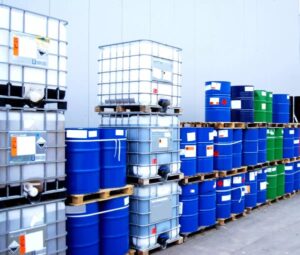Your cart is currently empty!

Chemical Labels in India: Printed vs. Non-Printed Options Explained
Discover the Best Chemical Labels in India
In the chemical industry, labels play a critical role in conveying vital information about products, ensuring compliance with regulatory standards, and enhancing brand visibility. Choosing between printed and non-printed labels is a decision that can significantly impact product presentation, safety, and regulatory adherence. This blog post dives deep into the intricacies of chemical labels in India, focusing on the distinctions between printed and non-printed options.
Printed Chemical Labels: Printed chemical labels are manufactured with essential product information directly imprinted on them. This method offers several advantages:
- Customization: Tailored designs and branding elements can be incorporated, enhancing brand identity.
- Compliance: Ensures adherence to regulatory requirements by including mandatory information such as hazard warnings, ingredients, and usage instructions.
- Durability: Printed labels are often resistant to chemicals, weather, and abrasion, ensuring longevity in various environmental conditions.
Non-Printed Chemical Labels: Non-printed labels, also known as blank labels, are pre-manufactured labels onto which information is added later through methods such as thermal transfer printing. Key benefits include:
- Flexibility: Allows for on-demand printing of variable data like batch numbers, expiration dates, and barcodes.
- Cost-Effectiveness: Initial setup costs are lower compared to printed labels, making them ideal for smaller batches and frequent design changes.
- Versatility: Suitable for a wide range of applications where immediate customization is necessary without compromising compliance.
Choosing the Right Option: When selecting between printed and non-printed labels, consider factors such as:
Regulatory Requirements: Ensure labels meet local and international standards for chemical product labeling.
Application Environment: Evaluate conditions like exposure to chemicals, outdoor elements, and storage conditions that may affect label durability.
Budget and Volume: Determine the scale of production, frequency of label changes, and cost considerations to optimize label choice for efficiency and economy.

GHS Label Printing: Ensuring Safety and Compliance in Hazardous Chemical Handling
Discover the Best Practices for GHS Label Printing
In the realm of chemical safety and compliance, GHS (Globally Harmonized System) label printing plays a pivotal role in communicating essential information about hazardous chemicals. These standardized labels are crucial for ensuring the safety of workers, emergency responders, and the public. This blog post delves into the fundamentals of GHS label printing, highlighting its significance, requirements, and best practices.
What is GHS Labeling? The Globally Harmonized System of Classification and Labelling of Chemicals (GHS) is an internationally recognized framework developed by the United Nations. It standardizes the classification and labeling of chemicals to ensure consistency in hazard communication worldwide. GHS labels include pictograms, signal words, hazard statements, precautionary statements, and supplier identification, all aimed at conveying critical information about the hazards of chemicals.
Importance of GHS Label Printing: Effective GHS label printing is crucial for several reasons:
- Safety: Provides clear and standardized information to workers and handlers, reducing the risk of accidents and injuries.
- Compliance: Ensures adherence to regulatory requirements across different jurisdictions, facilitating global trade.
- Emergency Response: Enables quick and appropriate response measures in case of chemical spills, leaks, or accidents.
- Environmental Protection: Promotes safe handling and disposal practices, minimizing environmental impact.
Requirements for GHS Label Printing: To comply with GHS standards, labels must include:
- Pictograms: Standardized symbols representing the nature of hazards (e.g., flammable, corrosive).
- Signal Words: “Danger” for more severe hazards and “Warning” for less severe hazards.
- Hazard Statements: Descriptions of the nature and degree of the hazards.
- Precautionary Statements: Measures to minimize or prevent adverse effects.
- Supplier Information: Name, address, and contact details of the chemical manufacturer or importer.
Conclusion: In conclusion, whether you opt for printed or non-printed chemical labels in India depends on your specific needs for customization, compliance, and cost-efficiency. Each option offers unique advantages tailored to different operational requirements within the chemical industry. By understanding these distinctions, you can make an informed decision that enhances product safety, regulatory compliance, and brand integrity.
Calculates Approx. Printed Label Pricing
For high-quality chemical labels in India, tailored to your specifications, contact TEEMRU. Our expert team ensures compliance with regulatory standards while delivering innovative label solutions that meet your unique requirements. Explore our range of printed and non-printed labels today to elevate your product presentation and safety standards.
#GHSLabels #ChemicalSafetylabels #ChemicalLabels #PrintedLabels

Leave a Reply